9 Most Shocking Television Deaths
We go through the nine most shocking fictional television deaths in the history of the medium.
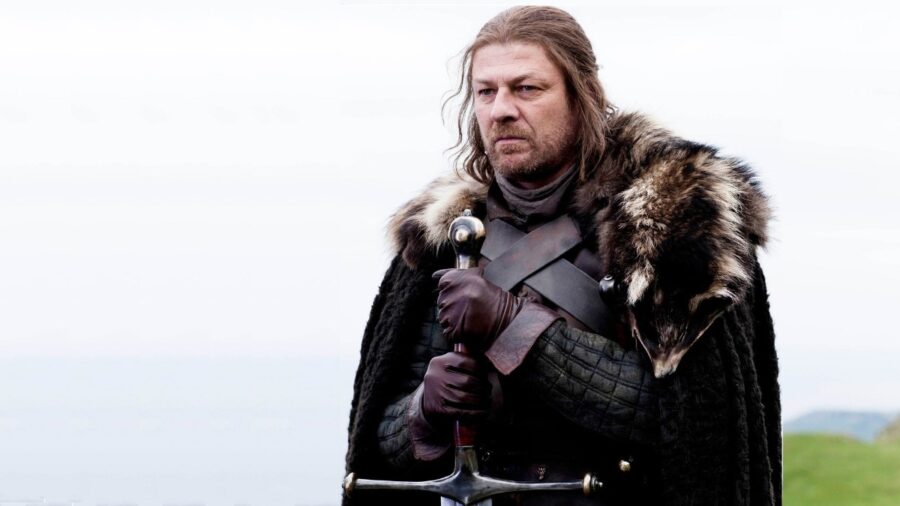
Particularly when it comes to shows like HBO’s Game of Thrones and AMC’s The Walking Dead, TV has become a lot more crowded with shocking and often brutal deaths of major characters in the last decade and a half. In some cases those difficult scenes have enhanced viewers’ experiences, while other scenes have utterly traumatized audiences. Here, according to us, are the nine most shocking deaths to ever unfold on television.
9. Jane in Breaking Bad
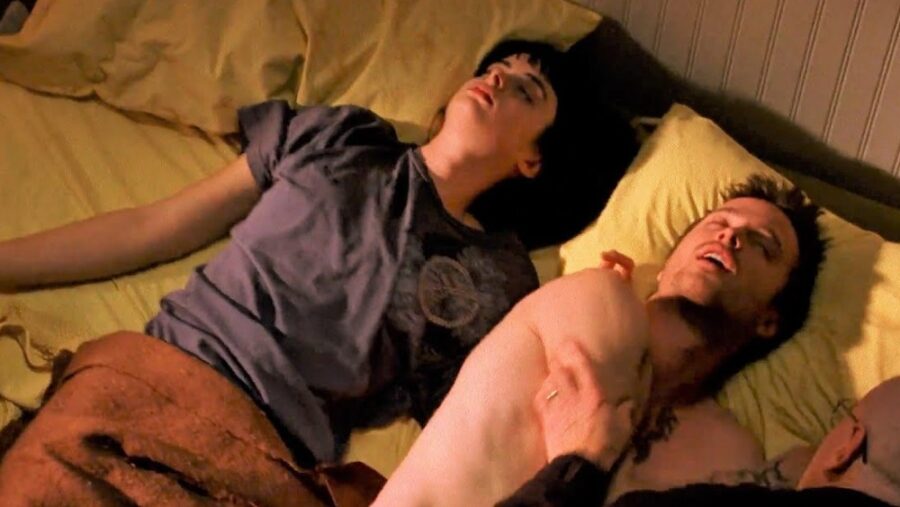
The death of Jane (Krysten Ritter) in the penultimate episode of Breaking Bad‘s Season 2 is a perfect example of why it’s often not the fact that a character dies that makes it so shocking, but how. After all, any Breaking Bad fans probably suspected as soon as Jane started coming between Jesse (Aaron Paul) and Walt (Bryan Cranston) that her days were numbered. What makes the scene so surprising is that, in spite of not initially wanting kill Jane, Walt watches and lets it happen.
Jane rolls on her back and begins choking on her own vomit after Walt unintentionally jostles her around while searching Jesse. Walt begins to intervene, but then stops himself as he sees the opportunity her death represents to get Jesse back on his side. You could argue no other scene in the series puts Cranston’s acting talent on full display, since we can see every single thought going through Walt’s head as he watches Jane die, even though he never says a word.
8. Ned Stark in Game of Thrones
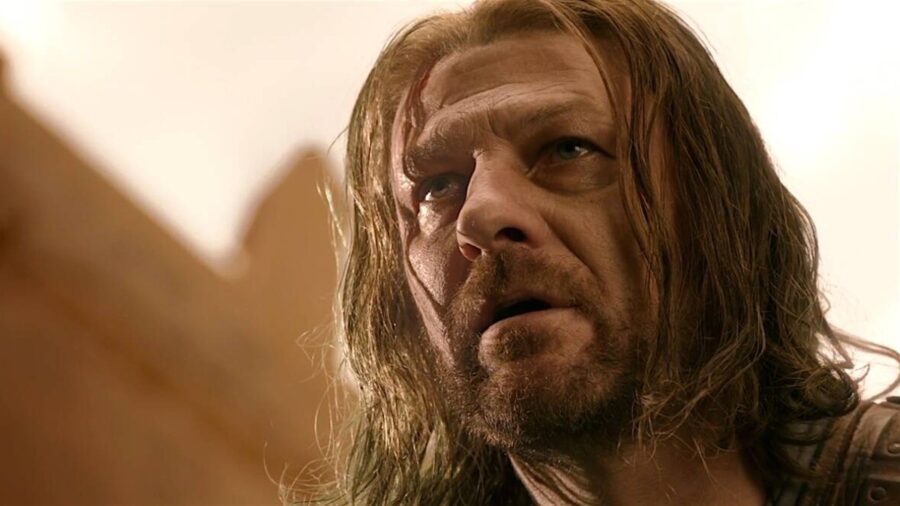
Perhaps the absolute King of surprising TV deaths, Game of Thrones utterly defined the phrase “no one is safe” when it killed off the character played by its lead actor, Sean Bean. Fans watching the show without reading the source material were likely waiting until the very last second of “Baelor,” the penultimate Season 1 episode, until the executioner’s blade went into Ned Stark’s neck, for the salvation that wouldn’t come.
Ned Stark’s death proves to be the first of many similar moments in Game of Thrones that threw audiences for a loop. As far as brutality is concerned, in comparison, Ned’s beheading proves to be fairly tame.
7. Adriana in The Sopranos
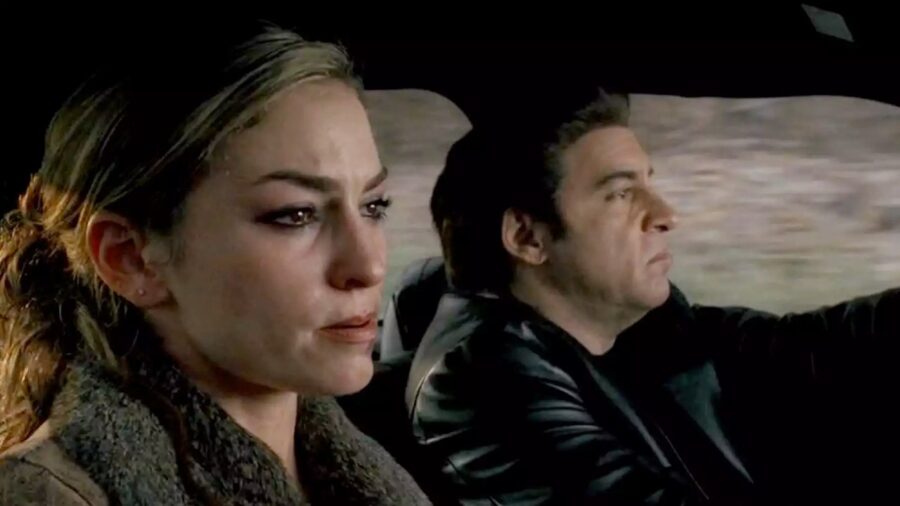
Easily one of the most tragic figures in The Sopranos, Adriana (Drea de Matteo) takes her final car ride toward the end of Season 5, in “Long Term Parking.” The show fools us, teases us with a happier ending that proves to be a fantasy, and even when we see Adriana is in the passenger seat with Silvio (Steven Van Zandt) giving us just a bit of a sinister smile, we want to believe he’s telling the truth about bringing her to see Christopher (Michael Imperioli).
As soon as Silvio’s car is surrounded my trees, we know exactly where he and Adriana are going, and that Adriana won’t be coming back. One of the more sympathetic characters in the series, Adriana’s death is that much tougher to take when the curses out of Silvio’s before he kills her reveal no forgiveness at all.
6. Charlie in Lost
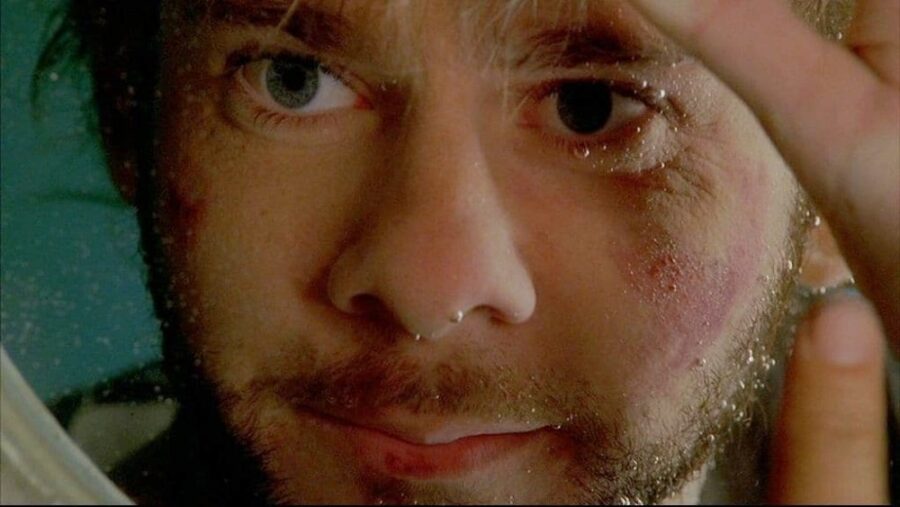
Season 3 of Lost ends with the death of Charlie (Dominic Monaghan), whose demise is rendered no less heartbreaking for it being foretold earlier by Desmond (Henry Ian Cusick). In a way, it makes it that much shocking, because we’re used to any kind of prophecies like this in TV and movies eventually turning out to be lies or some kind of trick of language.
It’s so much more devastating because one of Season 1’s most desperate moments hinges on Charlie’s survival. He’s kidnapped and hanged by Ethan (William Mapother) — one of The Others in disguise — and he’s saved at the last minute by Jack (Matthew Fox). To have him saved in Season 1 only to lose him two seasons later feels so wasteful.
5. Rita in Dexter

For most of Dexter, the titular lead’s romantic partner Rita (Julie Benz) remains mostly untouched by the violence of his other life, but that changes in the Season 4 finale. Dexter (Michael C. Hall) succeeds in delivering his unique form of justice to the Trinity Killer (John Lithgow), but in the episode’s closing moments we learn that before his death, Trinity made Rita his final victim. Dexter finds her in a blood-filled tub, and their son Harrison crying nearby, covered in red.
Along with shocking fans with Rita’s death, “The Getaway” proved to be the high mark of the series. No villain on the show proves anywhere near as memorable as Lithgow’s Trinity. Regardless the show limped on for four more seasons, plus the revival series Dexter: New Blood.
4. Opie in Sons of Anarchy
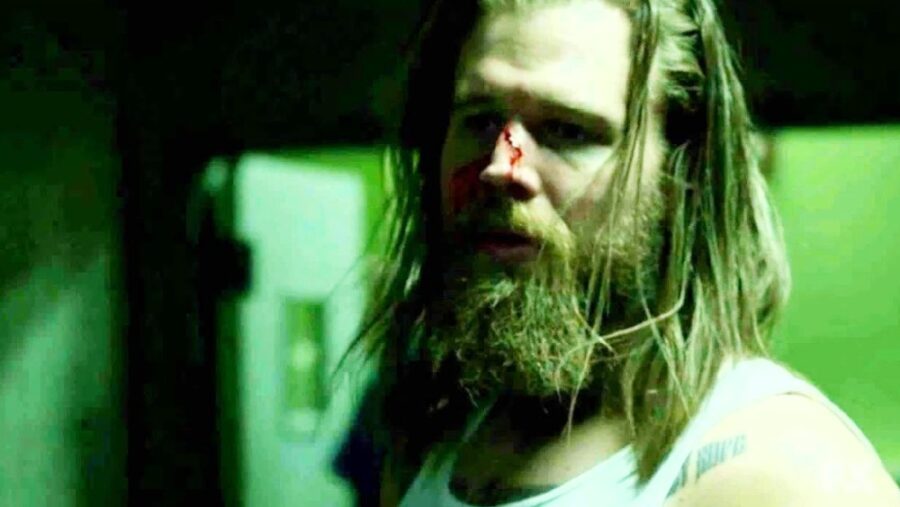
Sons of Anarchy eventually got well practiced in abruptly and cruelly killing off main characters, that by the series finale just about the entire lead cast from Season 1 was gone. But without a doubt the most difficult death for fans to handle was that of Opie (Ryan Hurst) in Season 5. In prison and separated from Jax (Charlie Hunnam), Opie nevertheless meets his end with a heroic, “I got this.”
As difficult as it was for Sons of Anarchy fans to deal with Opie’s death, it sounded even harder for Hurst. In 2012, the actor told Entertainment Weekly “I couldn’t stop crying” and that he desperately tried to talk series creator Kurt Sutter out of killing him off.
3. Tara in Buffy the Vampire Slayer
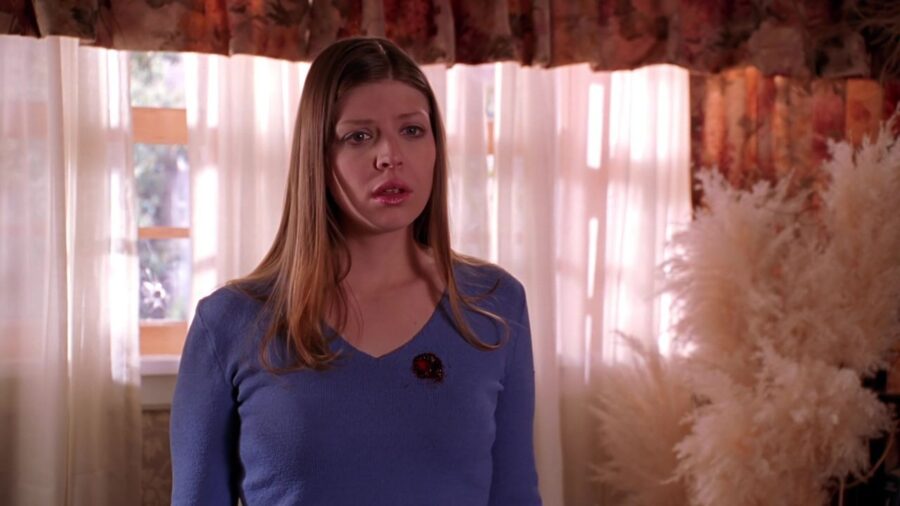
The death of Tara (Amber Benson) toward the end of Buffy the Vampire Slayer‘s sixth season remains perhaps the most controversial moment in the series. Ever since Season 4, Tara had been a close ally to the main characters and was integral in the coming out of Willow (Alyson Hannigan) as gay. Then in the closing moments of “Seeing Red,” Warren (Adam Busch) shoots both Buffy (Sarah Michelle Gellar) and, unintentionally, Tara.
Buffy survives, but Tara does not, and in dying so violently and abruptly Tara sadly becomes a chief example of the Bury Your Gays trope in which LGBTQ+ characters are introduced only to be killed off.
2. Glenn in The Walking Dead
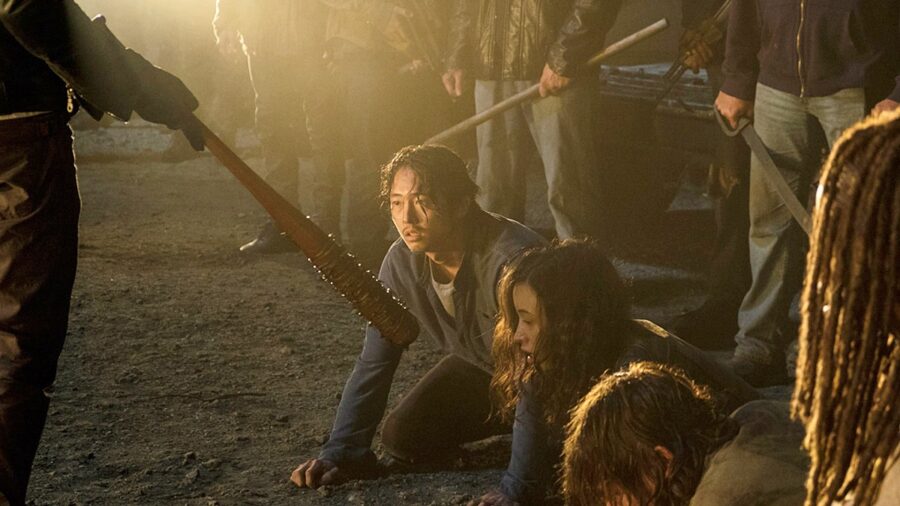
The death of Glenn (Steven Yeun) in Season 7 of The Walking Dead at the hands of Negan (Jeffrey Dean Morgan) serves as proof that warnings from the source material don’t really mean much when it comes to traumatizing fans. Glenn dies in much the same way his comic book counterpart does, but that didn’t stop the scene from destroying fans when it unfolded, nor did it stop a whole lot of them from dropping the show altogether. He also murders Abraham (Michael Cudlitz), but Glenn had been a fan-favorite since the beginning of the series.
With the show’s long life and the many spin-offs that continue to linger, it’s not uncommon to hear or read the opinion that the franchise as a whole has outstayed its welcome. But in its defense, it is a testament to both the writers of The Walking Dead and to Morgan’s talent as an actor that he manages to eventually become a more sympathetic character after what we all witnessed him do to Glenn.
1. The Red Wedding in Game of Thrones
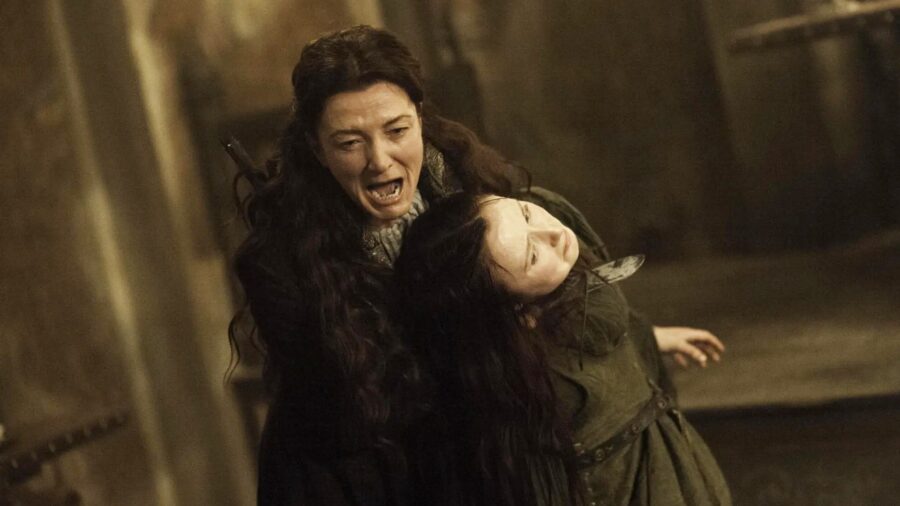
You knew this was coming, even if you didn’t see it coming in the show. Serving as the penultimate episode of Game of Thrones‘ third season (a lot of these come in the second-to-last episode, have you noticed?), “The Rains of Castamere” ends with the Infamous Red Wedding. The merciless scene sees the murders of Robb Stark (Richard Madden), his wife Talisa (Oona Chaplin), his mother Catelyn (Michelle Fairley), Robb’s dire wolf Grey Wind, and just about every loyal soldier who traveled with them. It happens only moments before the Starks could have been reunited with Arya (Maisie Williams), who is thankfully spirited away by the Hound (Rory McCann).
To add insult to injury, the series deviated from the source material in one key way: the emergence of Lady Stoneheart. While the Red Wedding mostly unfolds in the show just as it does in the books — with the notable exception of Talisa surviving the massacre in the source material — in the novels, Catelyn is ultimately brought back to life by Lord Beric Dondarrion (who Richard Dormer plays in Game of Thrones). Lady Stoneheart is not the same woman in her new life, but rather is consumed with vengeance.












